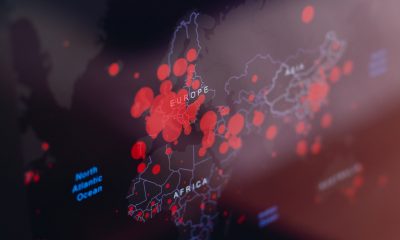Breaking
Study: Weather patterns that bring heatwaves happening more
WASHINGTON — Daily weather patterns have changed in recent decades, making eastern North America, Europe and western Asia more prone to nastier summer heatwaves that go beyond global warming, a new study finds.
A team of climate scientists at Stanford University looked at weather patterns since 1979 and found changes in frequency and strength in parts of the world, according to a study published in the journal Nature on Wednesday. These are the types of weather patterns with stationary high and low pressure systems that you see on weather forecasts, which is different than gradual warming from man-made climate change.
The team studied the kind of upper air patterns that “sort of amplifies the warming trend,” said study lead author Daniel Horton.
The study doesn’t attempt to explain why these changes are happening. But in general they fit a theory that has gained momentum in climate science that says melting sea ice in the Arctic has sometimes altered the way the jet stream flows, contributing to extreme weather like Superstorm Sandy, outside experts said.
In many cases, including the eastern U.S. and western Asia in summer, some of these changes have become even more noticeable since 1990, the same period in which Arctic sea ice has gone through a rapid decline, the study found.
For example, the type of summer weather pattern with a northeastern North American high pressure system that keeps it hotter than normal in the eastern U.S. used to happen about 18 days a summer in the early 1980s. It now occurs about 26 days a summer, the study found.
“There are more of them each summer and on average they are lasting longer and the longest are lasting longer,” Horton said.
That pattern shift is even stronger in the summer in Europe and western Asia, Horton and co-author Noah Diffenbaugh found.
The patterns Horton and Diffenbaugh studied are different from the one responsible for the current southeastern U.S. heatwave, Horton said. But the weather patterns were the type responsible for heatwaves that killed more than 50,000 people in western Russia in 2010 and more than 70,000 people Europe in 2003, the study said.
In winter, weather pattern shifts have occurred that made extremely cold snaps in central Asia even worse, Horton said. But the study also found an increase in the weather patterns associated with weaker extreme cold snaps in western Asian winters.
Diffenbaugh said the changes could be a result of random chance, or a side effect of climate change and melting sea ice as others have theorized.
Rutgers University climate scientist Jennifer Francis, for example, hailed the work as thorough and “consistent with expected changes associated with a rapidly warming Arctic.”
This shows that it’s getting harder to separate daily weather patterns from long-term changes from global warming, said University of Georgia meteorology professor Marshall Shepherd, who wasn’t part of the study.






















